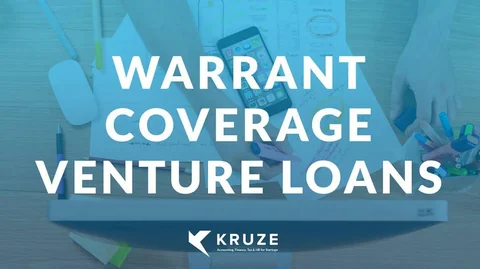
The rationale for a warrant coverage or a little bit of equity upside for the lender is that they’re taking a lot of risks here. They’re lending money to startups, which are risky. And venture debt lenders are looking for IRRs that are in the mid to high teens, vs more traditional lenders who are looking for a much lower rate of return. So a big way to get that extra IRR is through warrant coverage - the startups that really go big produce extra returns that boost the overall fund performance.
Since the lender wants to participate in the upside of the startup, therefore the lender will often ask for anywhere from 2% to 10% of the loan amount to be in the form of equity. That means if it’s a million dollar loan, the lender may be looking for $20,000 up to $100,000 of extra equity.
It’s kind of like a stock option. If the company does really well, the lender can exercise the warrant and participate in the upside. That’s how warrant coverage for loans works in the venture debt space.
Venture Debt Warrant Coverage Can Be Negotiated
You can negotiate warrant coverage. The first place to try to negotiate is the amount of warrants - this can be moved down, in particular if you’ve got multiple venture debt terms sheets that you are comparing.
Next is to look at when you actually are required to provide the warrants. Many founders do not realize that this is negotiable - but in fact, lenders often are willing to make it so that part of the warrants are earned when the debt agreement is signed, and the other when the startup actually draws down the debt!
The startup may want to make it based on usage, or how much they draw down. That way, if they only draw half of the loan or a quarter of the loan, they’re not paying the full warrant coverage.
Now in practice, what usually happens is the two parties meet in the middle, and half of the total warrant is based on commitment, and half of it is based on usage. So say your warrant in your venture debt deal is 8% of the total deal amount. Probably 4% of that would be based on commitment, and 4% would be based on usage. That way, if the startup only draws a little bit of a down, you’re only paying minimal warrant coverage.
Key Terms of Warrant Coverage
The key items that matter when offering a venture debt lender warrant coverage are the amount of shares, the strike price, the expiration date of the warrants and as we’ve just mentioned, when the warrants actually are issued, either at the upfront or when the loan is drawn.
- Number of Shares: Indicates the total shares available for purchase by the warrant holder upon exercising their warrant coverage, valid until the expiration date.
- Strike Price: The set price per share to be paid by the holder when they exercise their warrant coverage, applicable until the expiration date.
- Expiration Date: The deadline for exercising the warrant. Failure to exercise by this date renders the warrant void and of no value.
- When Issued: Upfront or when the loan is used - read above for more information.
Is it normal for a venture debt lender to ask for warrants?
Yes, it’s totally normal for a venture debt loan to include an ask for warrants. You can negotiate for lower warrant coverage, but this is a standard ask.
Kruze Consulting is a leading CPA firm only serving funded startups. If you are a funded startup, choose Kruze Consulting’s team of CPAs, bookkeepers, CFOs, former IRS tax auditors, and venture experts. The firm handles all things Accounting, Tax, Finance, & HR: interim CFO Consulting, financial modeling, annual taxes, R&D tax credit studies, venture debt consulting, 409A reporting, bookkeeping, AR/AP, and Seed/Series A/B Fundraising Preparation. Contact Kruze today!








